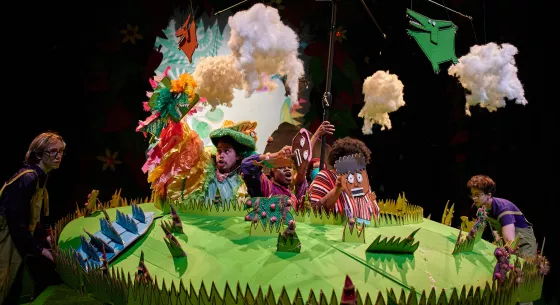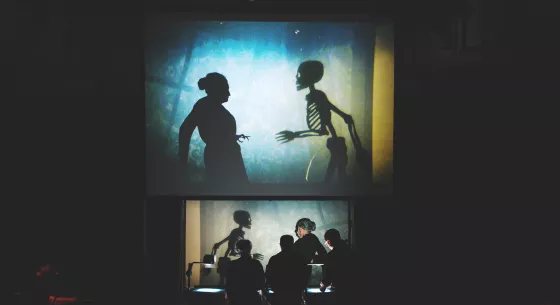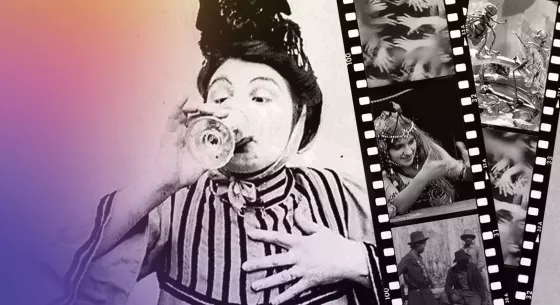Bereaved of her twin sister Ava, Ada marks time in the patterns of a life built for two, until a traveling carnival’s mirror maze plunges her—and you—into a journey set in the New England gothic landscape. “This Chicago troupe is conjuring phantasms to die for in an unclassifiable story of spectral beauty” raves The New York Times. Manual Cinema creates handspun cinema combining shadow puppetry, cinematic techniques, and innovative sound—all in plain view. Aaron David Miller adds to this magical mixture playing Northrop’s historic pipe organ. This event includes a live Q&A with the artists following the show.
Pre-show Fun
Starting at 6:00 pm, all ages are welcome to join us in the Northrop lobby for a celebration of puppetry and family-friendly activities featuring Twin Cities’ very own In The Heart of the Beast Puppet and Mask Theatre.
Five extra-large, wandering puppets will greet visitors inside and outside the theater. Attendees can visit with artists from In The Heart of The Beast, and even create their own puppets to take home at a ‘Make 'n Take’ center.
In the News
Read all about how Manual Cinema uses "obsolete technology," handmade puppets, and actors in this interview with Drew Dir, co-founder and co-artistic director of Manual Cinema in MinnPost: "Ada/Ava weaves puppetry and cinematic techniques at Northrop."
Free for U of M students; ticket required.















